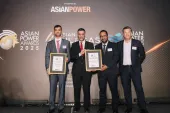
Distribution Automation Solutions – An approach to increase availability in distribution networks
A major requirement on electricity supply systems is high supply reliability for the customer – which is mainly determined by the distribution networks. Supply reliability is influenced by various technical and organizational factors, and typically quantified using criteria such as SAIDI and SAIFI.
In general, customer expectations on supply reliability are steadily increasing – in some cases explicit power quality criteria are even included in negotiated contracts between customers and utilities. Moreover, in liberalized markets, regulators typically require the utilities to report on the reliability performance, or define explicit performance targets – that are even penalized
in case of violations in several countries.
Given this background, the power quality performance of distribution networks is coming more and more into focus of system operators. Today’s distribution networks typically feature a rather low degree of automation only. The implementation of distribution automation is a highly capable and powerful approach to increase supply reliability performance. Even the automation of a smaller share of ring main units in a system only can already realize significant improvements. Intelligent agents in substations and on the feeder devices allow effective monitoring and local decision making without human intervention.
The automation allows detecting and faster reacting on specific circumstances in the network. The system itself is monitored by
centralized systems such as a Regional Control System. The Regional Controller authorizes local automation and provides additional supervisory information, in order to handle network situations, which are out of the range of the local automation system and can interact with the central SCADA.
Scalable distribution automation solutions are starting with the monitoring of distribution substations through RTUs and the use of short circuit indicators, mainly this configuration is used in ring main units for cable networks. Over headline networks can also be automated by using peer-to peer interaction between reclosers and sectionalizers on the feeders even with in combination with Regional Control System. The two concepts can provide secure and reliable access to disconnectors, circuit breakers and reclosers for monitoring purposes and provide control over these devices.
Concept 1: Self Healing Implementation with a centralized Regional Controller on Substation level with decentralized IEDs
Protection relays monitor and protect distribution feeders from the substation and control feeder switches. Additional disconnectors or circuit breakers at the secondary substations can be controlled via RTUs or protection relays. Standard ANSI protection functions for distribution feeders are included in the device to handle critical fault satiations by tripping circuit breakers at the in feed and sending the information to a so Regional Controller. Currents, voltages and status information from primary equipment of the distribution network are sent to the Regional Controller to analyze and take further action.
The Regional Controller is a layer between the central SCADA system and the intelligent devices in the field, like IEDs on the
disconnectors and circuit breakers. The IEDs sent the status of the distribution network to the regional controller to analyze and take further action. The regional controller is setup to handle standard switching for fault detection via fault indicators and will also handle further actions for fault isolation and service restoration.
Concept 2: Self Healing Implementation with decentralized IEDs with peer to peer interaction
The system is designed to work using independent automated devices and the self healing logic resides in individual IED located
in the feeder sections. The IEDs located at each secondary substation are associated with a circuit breaker or disconnector and include current and voltage sensors to provide the necessary input data used to determine logical sequences. This information is then made available to each of the other IEDs, starting over the communications channel located within that particular loop and then back to the substation.
Modern communication systems use open standards rather than proprietary technology, especially the IEC 61850 standard support this decentralized application. IEC 61850 provides the required logic and flexibility for the realization of self healing functionality.
Peer-to-peer functionality via IEC 61850 generic-object-oriented substation event (GOOSE) messages provides not only binary
data, but analog values as well. Each device contains extensive programmable logic to realize the automation functionalities – using input data such as voltage, current, timecurrent characteristic curves or load. The IEDs then handle the self healing functionality and attempt to clear and isolate faults, and to then initiate the supply restoration logic.
Such advanced distribution automation concepts – up to the self healing functionality offered by autonomously operating breakers – can be realized using technologies and equipment that is readily available today. In distribution networks, advanced and “smart” distribution automation solutions can provide substantial technical and commercial advantages to network operators – being much more cost-effective compared to solutions based on primary technology only.
Siemens ENEAS (Efficient Network and Energy Automation Systems) - Solutions for distribution automation
www.siemens.com/eneas



















 Advertise
Advertise







